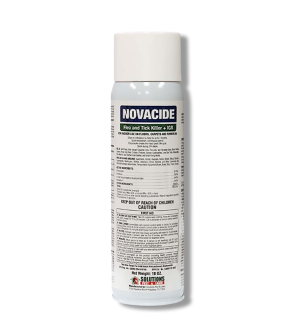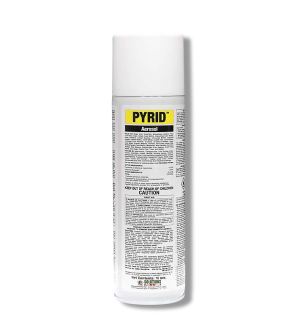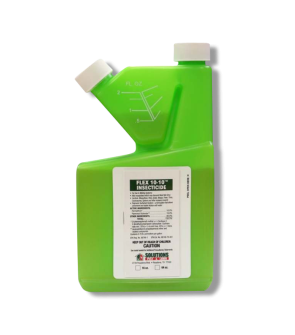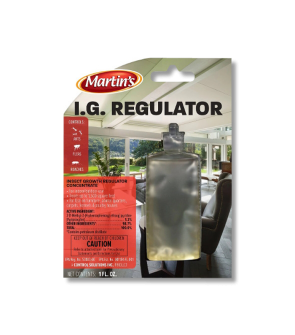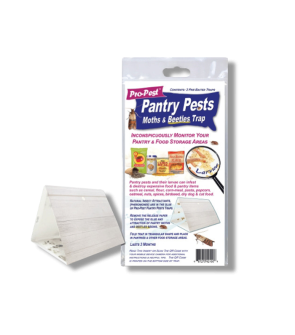Cacao Moth Control
Most Effective Products
Cacao Moth Control: How to Get Rid of Cacao Moths
This page is a general cacao moth control guide. Using the products and methods suggested you will get control of cacao moths in your property. Follow this guide and use the recommended products and we guarantee 100% control of cacao moths.
If you open a packet of food or scoop up piles of feed or hay and discover messy strands of webbing and small caterpillars, it might be the cacao moth. Commonly known as the warehouse moth, cocoa moth, tobacco moth, chocolate moth, or hay moth are a primary pests of stored products. These names are not coincidental as this small brown moth prefers to infest these sites for the larvae to feast upon.
These troublesome pests are normally introduced to your home or stored products from other contaminated products. Outbreaks usually go unnoticed by homeowners until the adult cacao moth begins flying around and laying eggs. Most of the damage done by this pest is in its larvae (caterpillar) form, because it spins webs and defecates in a variety of products such as cereals to more expensive items like tobacco or hay.
Cacao moths have been known to cause major headaches in both homes and businesses with their ability to lay numerous eggs from May to October. These pests are on a mission to reproduce, and once they infest your home or other food storage structure the problem is likely to increase. Just because an adult cacao moth is flying around does not mean the infestation cannot be controlled, just quickly implement the products and tips in this article.
Identification
Before you can proceed with a treatment approach, you will need to certain the moth infesting your property is a cacao moth. Misidentification can lead you to using the wrong treatment plan and products, costing you time and money. Take a look at the following characteristics to know what the cacao moth looks like:

- Adult cacao moths are a light brownish gray in color within their upper wings with forewings crossed with two light colored bands extending across each forewing. The hind wings are a fairly uniform tan color, and the antennae are slender and lack feathering.
- Similar in appearance to the tropical warehouse moth, also known as almond moth, with the exception that wing markings are more distinct and they cannot tolerate varying temperature environments like the cacao moth.
- In the adult form, their wingspan can reach up to 16 millimeters (0.625 inch) from tip to tip.
- Larvae are 10 to 15 millimeters in length. Their bodies have some bristles and are cream-white in color with a brownish head capsules and brownish body markings.
- When larvae emerge from their habitats to being their next phase of life they will form pupal cases. Pupal cases are whitish and you can see the yellow to brown colored pupae inside.
Use the image and description above to help you correctly identify a cacao moth. If unsure of the pest infesting your food/grain items, bring us a photo or sample of the pest in a sealable plastic container to our store location. By doing so, our employees can identify the pest and suggest the appropriate treatment plan and products to control that pests. You may also call or email us for assistance if there is no physical store near your location.
Inspection
Once you have identified the cacao moth, you can move forward with inspection. During this phase, you are learning where cacao moths and their larvae are congregating and the conditions allowing them to thrive. You will focus on both the inside and outside of your structure as this pest can be found in both of these locations.

Where to Inspect
Cacao moths can be found in many packaged or stored products including tobacco, cereals, grains, processed flours, nuts, dried fruits, cocoa beans, cocoa powder, seeds, feed, and chocolate products. In more agricultural settings, this pests larvae also inhibits straw or hay.
Indoors, this will be areas that hold these food related items such as pantries or cabinets, and they can also infest food handling equipment. Outdoors, this can be the inside of any structure that can hold these items such as garages, barns, warehouses, sheds, or more.
What to Look For
As with most moths, the adult cacao moth is most active during the night and usually fly towards the structures ceiling. If the adult moth is seen indoors it is indicative they they may have laid eggs on stored products or on leftover food sources within machinery.
Cacao moth larvae are voracious eaters and will feed until they are ready to pupate. Any food that remains uneaten is soiled by excrement and webbing. Unfortunately, once a package or stored item is infested theres no way to save it.
Check inside packages for webbing, larvae, and moths. Be sure to check any drawers and shelving for cracks and crevices larvae can hide in. Take note of which foods are infested and where you have seen larvae.
Other signs of cacao moth larvae is their granular frass (feces) left on and in food items, which is about the size of ground pepper. When completely grown, they will leave the food item and move towards the package opening to form a pupae.
Treatment
Before you can control your cacao moth infestation or handlement of any type of pesticide materials, you will need to wear the proper personal protective equipment (PPE).
Most of this treatment plan focuses on eliminating the adult cacao moth as their larvae (caterpillars) are often difficult to spot until damages occur. By controlling the adult form you can successfully control future generations of larvae and their activities.
Step 1: Dispose of Contaminated Food/Goods

If you notice these pests indoors, its time to do a thorough check of your pantry and other areas where you store food or grain materials. Unfortunately, any items you see that are contaminated will need to be thrown away. You will also need to check items that were closed or brand new with signs of activity then toss them into a outdoor garbage container far from your homes foundation and areas where food/grain materials are stored.
If one food type item is infested then it is likely that the rest of the food stuffs in that area are too. To fully control cacao moth larvae, we suggest disposing of all food items around the infested product. While it may sound extreme, these pests area able to invade through the smallest opening to lay their eggs. For every adult moth you have seen, imagine up to 300 eggs waiting to be hatched throughout your foodstuffs.
Once all damaged items are removed, proceed with vacuuming the area where it was stored giving special attention to the corners. Contents inside the vacuum should be timely disposed of in an outside garbage can. In larger storage areas, sweep with a broom to ensure all food, grain, or hay materials are removed. Since cacao moth larvae will wander away from food items it is best to remove the food storage shelf then clean the pegs and where the screws were found with a toothpick.
Wipe down the pantry shelves or areas holding the contaminated food stuff with water to clean up any food residue. Do not use any strong cleaners or bleach, as these will keep pests away from the pesticides you will apply.
Step 2: Apply Insecticide Aerosol

Before placing all food items back in their original place, it would be best to perform a crack and crevice treatment with a aerosol insecticide like Pyrid Insecticide Aerosol and Novacide Flea and Tick Killer.
Pyrid Insecticide Aerosol is a synthetic pyrethroid aerosol that can be used to flush tobacco moth larvae from cracks, crevices, and corners of pantries, cabinets, food processing and handling equipment and other places where they may harbor and kill them on contact. This product is made with pyrethrins, a botanical insecticide, so its safe to use in food storage areas, though you should still clear out your pantry/food storage area and keep people and pets away from the area until the vapors have dispersed.
To use Pyrid Insecticide Aerosol as a crack and crevice treatment, replace the white actuator with the red and attach the application straw to the spout. Shake the can, and spray along the lengths of any cracks and crevices in your pantry where any moths or their larvae could be hiding.
When treating cracks and crevices, you just want to spray in quick bursts, usually about 1 second of spray per foot. Pyrid does not leave behind a residual, but it is an excellent contact spray with a powerful knockdown and quick kill.
When spraying make sure to not exceed 10 seconds of spray per room or 10 seconds per 100 cubic feet in commercial areas. Any adult or larvae pests in your line of sight can be directly sprayed with Pyrid Insecticide Aerosol in short bursts from a distance of 18-24".
Next, apply Novacide Flea and Tick Killer. Novacide Flea and Tick Killer is another insecticide aerosol, but this one contains an insect growth regulator or IGR. This will disrupt the moths life cycle and prevent eggs, larvae, and pupae from developing into reproductive adults. Additionally, Novacide has a long-lasting residual and will control treated areas for up to 7 months.
Apply Novacide Flea and Tick Killer as a spot treatment along the edges of your shelves. Just shake the can, hold it down upside-down, and spray a barrier where shelving meets the wall. Affected moths will not be able to produce eggs, and the larvae will not be able to grow into reproductive adults.
Step 3: Set Up Moths Traps

Once your chemical applications have dried, set-up pantry moth traps like Pro-Pest Pantry Moth & Beetle Traps in your pantry to lure and catch flying moths. These traps contain pheromones that attract many stored product pests.
Simply peel off the wax paper, then fold the trap into a tent. You can set the trap on a shelf or hang it to catch different crawling or flying insects. One Pro-Pest Pantry Moth & Beetle Traps will cover an area up to 300 sq. ft.
Any moths in the area will be drawn to the trap and will get stuck on the glue. We suggest using multiple traps for complete pest coverage and for mass infestations.
Come back to the traps on a weekly basis and replace them when they are full or covered with dust. This product will last between 60 to 90 days.
Step 4: Space Spray Application within Nonfood/Nonfeed Areas

For nonfood / nonfeed areas in structures outside of your home like the garage or other sites that are used for storage of food items, hay, grain, wheat, and other food related items you can perform a space spray application. Flex 10-10 is a emulsifiable concentrate formulated with the active ingredients permethrin 10% and piperonyl butoxide (PBO) 10% to eliminate various pests, including tobacco moths.
While it will eliminate adult cacao moths, it cannot control the larvae stages. For this reason we suggest using an insect growth regulator (IGR) like Martin's IGR Insecticide. Martin's IGR Insescticide is a liquid insect growth regulator that prevents underdeveloped cacao moths from maturing into reproducing adults thus providing long-term control.
Determine how much product to use by measuring the square footage of the treatment area. To do this, measure the length and width of the treatment area in feet then multiply them together (length X width = square footage).
Use Flex 10-10 and Martin's IGR Insecticide together in a ULV fogger as a space spray application. For mild infestations, dilute 3.2 fl. oz. of Flex 10-10 per gallon of spray dilution (1:39) for a 0.25% permethrin ready to use product. For severe infestations, use 6.4 fl. oz. of product per gallon (1:19) to make 0.5% permethrin ready to use product. You will also need to mix in 1 fl. oz. of Martin's IGR Insecticide per 1 gallon of water.
Pour half the amount of water into the ULV fogger tank, then add measured amount of products, then pour in remaining half of water. Close the spray tank lid and shake until solution is evenly mixed.
Once your solution has been mixed, apply as a fine mist in labeled areas. Close doors and windows and shut off ventilating systems and remove or cover exposed food and drinking water before application.
Spray at an upward angle to uniformly mist the entire space at a rate of 1 ounce dilution per 1,000 cubic feet of space. Do not remain in treated area.
Exit area immediately, and keep the treated area closed for at least 10 minutes. Ventilate the area and sweep up dead insects before occupying.
Prevention
Once you have controlled cacao moths and disposed of all damaged items, you will need to immediately implement some preventative practices. Here are some preventative measures you can take so cacao moths and their larvae do not return to your home or structure:

- On-going sanitization of all areas in your garage, kitchen, pantry, cabinet, and other areas where stored products are kept will help to limit attractants for the cacao moth. Wipe off counters, shelves, floor, and corners of food storage areas with a cloth soaked in warm water to remove crumbs, food aromas, and other residue to avoid cacao moths from laying eggs in these sites. Vacuum, mop, and sweep the floors as well as take the trash out to an outdoor garbage can. Try not to overstock your pantry shelves. The longer food just sits on the shelf, the more susceptible it becomes to infestation.
- Treat cracks and crevices that may serve as a hiding spot for cacao moth larvae with a residual insecticide like Novacide Flea and Tick Killer. Do not use in food areas of food handling establishments, restaurants, or other areas where food is commercially prepared or processed. Do not contaminate food or feedstuffs.
- When buying dry foods at the grocery store, examine the packaging. If you can see the product through transparent packaging, try to look for any moths, larvae, or other pests. If you see any holes, rips, tears, or other openings, pass that item up. You will also need to keep up with regular routine check of all stored and packaged food and dry plant material in your home, barn, garage, and other structures. Even new, sealed containers that have been just purchased or brought into your home will need to be inspected to prevent cacao moth larvae infestations.
- Its best to keep food in tight-fitting or sealed containers. Put cereals, grains, and flour in containers that can be tightly sealed. Pet food and bird seed are often overlooked and extremely conductive for pantry pests, so its important to also store your pet food in sealed containers. By keeping food in air-tight containers, you can stop infestations from spreading. If an infestation starts inside a sealed container, that means the food was already infested with eggs before it went in, and you can throw it out without risking the rest of your pantry.
- Throughout the year, keep up with regular pesticide applications to ensure protection. With Novacide Flea and Tick Killer residual, we recommend you apply twice a year for preventative applications. For protection outdoors and within nonfood/nonfeed areas, reapply Flex 10-10 every 90 days for contact kill and preventative treatments. Be sure to check Pro-Pest Pantry Moth & Beetle Traps regularly and replace them every 3 months.
Key Takeaways
What are Cacao Moths?
- Cacao moths are a type of stored food product pest that falls under the small moth family of pyralidae. The damage caused by this pest is mostly done with their webbing and fecal material in their larvae stage as they spend their lifecycle infesting stored foods, hay, and other food stuffs.
How to Get Rid of the Cacao Moths
- To get rid of cacao moths, you will first need to locate and throw away all damaged products and food in your home and other storage structures like your garage or barn. For complete control, it would be best to throw away all food and product stuffs in the site of activity. After all products have been removed, you will need to treat all cracks, crevices, and voids with Pyrid Insecticide Aerosol to flush out and eliminate cacao moth larvae. If possible, directly spray any adult pest or larvae that you can see with Pyrid Insecticide Aerosol. Then, when chemical applications are done lay out cacao moth traps such as the Pro-Pest Pantry Moth & Beetle Traps. Lastly, treat all nonfood/nonfeed areas with Flex 10-10 and Martin's IGR Insecticide to control adult and larvae stages.
Preventing Cacao Moth Reinfestation
- Prevent cacao moths from returning to your home, barn, shed, garage, or other structure with regular cleaning, monitoring new and old food items, and storage of these items in sealable plastic containers. Apply Novacide Flea and Tick Killer as a barrier treatment in labeled sites to stop cacao moths from laying eggs near these sites. In addition, placing Pro-Pest Pantry Moth & Beetle Traps in these areas throughout the year to eliminate and monitor cacao moths and their larvae.

